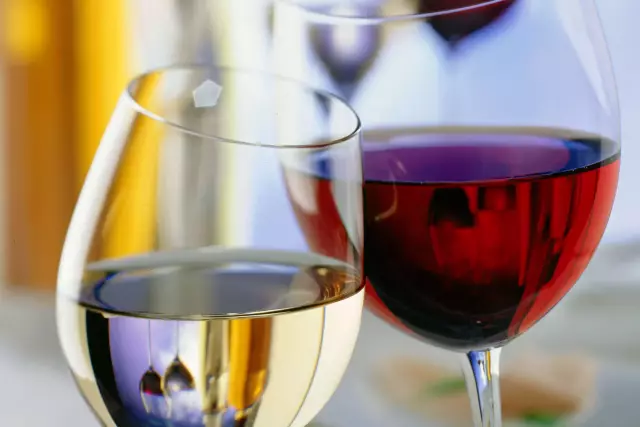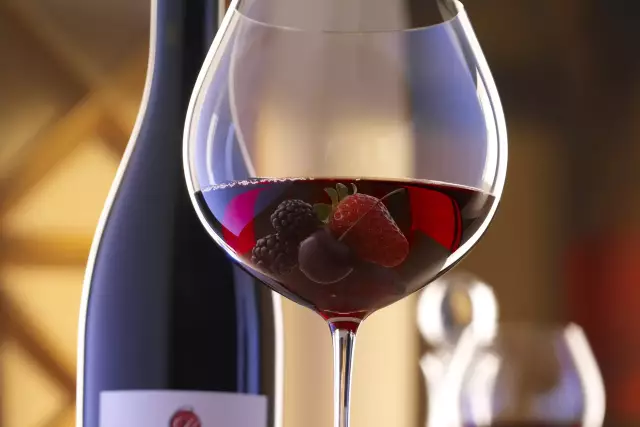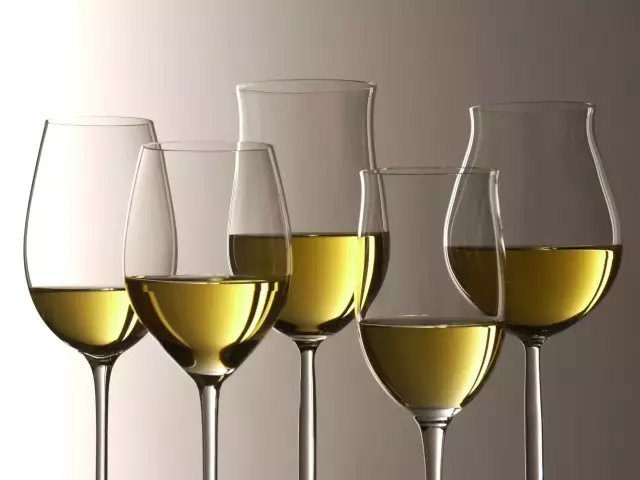Wine Storage
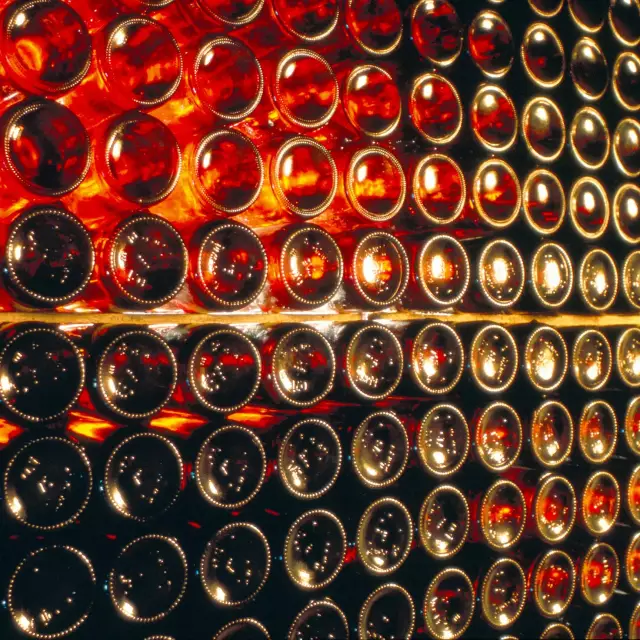
The best way to store wine is in a cool, damp cellar, which is preferably odorless, dark and free of vibrations. An average temperature of 10 - 12 ° C is ideal for wine storage.
And when do you enjoy which wine?
For the professional, a temperature controlled wine cabinet that simulates the optimal conditions of the wine cellar, is recommended as an alternative.
If you don't have such ideal conditions, you don't have to do without a small wine supply. A cool place in the apartment, where the temperatures do not fluctuate too much, also suffices. Often this is the bedroom, even if this sounds strange at first. There is always a place under the bed for a few bottles of good wine. Basically, the higher the ambient temperature, the faster the wine matures, so permanent temperatures above 20 ° C are to be avoided if possible, as are strong smells or exposure to light.
Wine closures determine the type of storage
For long-term storage, wines that are closed with corks should be kept lying down so that the cork does not dry out and shrink. Additional protection for premium wines is provided by sealing the cork with a special sealing wax. Cork-sealed wines that are intended to be consumed within 1 - 2 years can also be stored upright, as the moisture from inside the bottle keeps the cork sufficiently moist.
Wines with plastic corks, screw caps, bottle caps or glass caps can be safely stored upright.
Potential for aging increases with quality
Every wine is individual, therefore life expectancy differs. In general, however, it can be said that the higher the alcohol, sweetness, acidity and - in the case of red wine - tannins, the longer the wines can age. It depends on the sum of these components. This means that noble sweet wines such as Trockenbeerenauslesen or ice wines, which have a fresh acidity and sufficient alcohol content, can be stored for 20 years or even longer. They often attain their full maturity and elegance after aging for several years so make exceptional gifts for very special occasions, such as weddings. It can be memorable to enjoy a wine from your year of birth.
Premium red wines with a high tannin content and 13% or more alcohol volume can also remain stable for decades, especially if they are also aged in barrels. Basic quality dry wines should be drunk within 3 years. In the premium range, 5-10 years are not a problem for dry wines. With Spätlesen and Auslesen wines, especially of the more acidic Riesling variety, the wine can be stored a little longer.
Sparkling wine tastes best fresh. Branded sparkling wines should be bought as soon as possible before consumption and stored for a maximum of one year. Winzersekt, made with the traditional bottle fermentaion, can tolerate 2-3 years of storage. Rosé and Weißherbst taste best when drunk young, because the pronounced fruit flavors come to the fore most clearly in the first few years. They are rarely intended for long storage, so they should be consumed within 1-2 years.
When buying wines that are intended for a longer storage, it is advisable to buy a little more because it is extremely exciting to repeatedly try the same wine every few years and follow its maturity. With this in mind, the rule of thumb is to store 3x30 bottles of wine rather than 30x3 bottles. For many wine connoisseurs, choosing the time of perfect maturity and then drinking the wine at its peak on a special occasion is the greatest joy. However, it also requires a little practice and you should also seek the advice of experts or the winemaker from whom the wine was bought. Specialist books or special wine seminars on the subject are also helpful.
From which century is the oldest still liquid wine in the world?
The oldest still liquid wine dates back to the 4th century. The bottle was discovered in a grave in 1867 and can now be seen in the Historical Museum of the Palatinate in Speyer.
Varietals

More recipe ideas
with ribbon noodles Coq au Riesling
with ribbon noodles
- 1 ganzes Huhn
- 0,4 Liter Riesling
- 0,2 Liter Sahne
- 1 kl. Glas Cognac
- 2 Stück Schalotten
- 1 Stück Knoblauchzehe
- 1 Stück Eigelb
- 1/2 Bund Petersilie
- 1 EL Mehl
- 50 Gramm Butter
- 1 EL Olivenöl
- nach Belieben Salz & Pfeffer
Carve the chicken. Heat approx. 50 g butter with 2 tbsp olive oil in a large frying pan and fry the chicken pieces until light brown (without the lid). Season lightly with salt.
Finely chop the shallots, peel and finely chop the garlic. Chop the parsley and add everything to the meat. Sauté briefly with the pan closed. Pour the cognac over the meat and light it (flambé). Deglaze with 1/3 litre of Riesling and leave to simmer for half an hour over a low heat. If necessary, add a little more wine and simmer for a further 10 minutes.
Remove the chicken pieces and keep warm for a short time. Mix 1 tbsp of flour with 1 egg yolk and the cream and whisk into the sauce. Flavour with salt and pepper. Return the chicken pieces to the pan. Serve immediately.
This goes well with tagliatelle.
Variant:Fry 150 g fresh mushrooms in 50 g butter and add.
- Riesling (trocken)
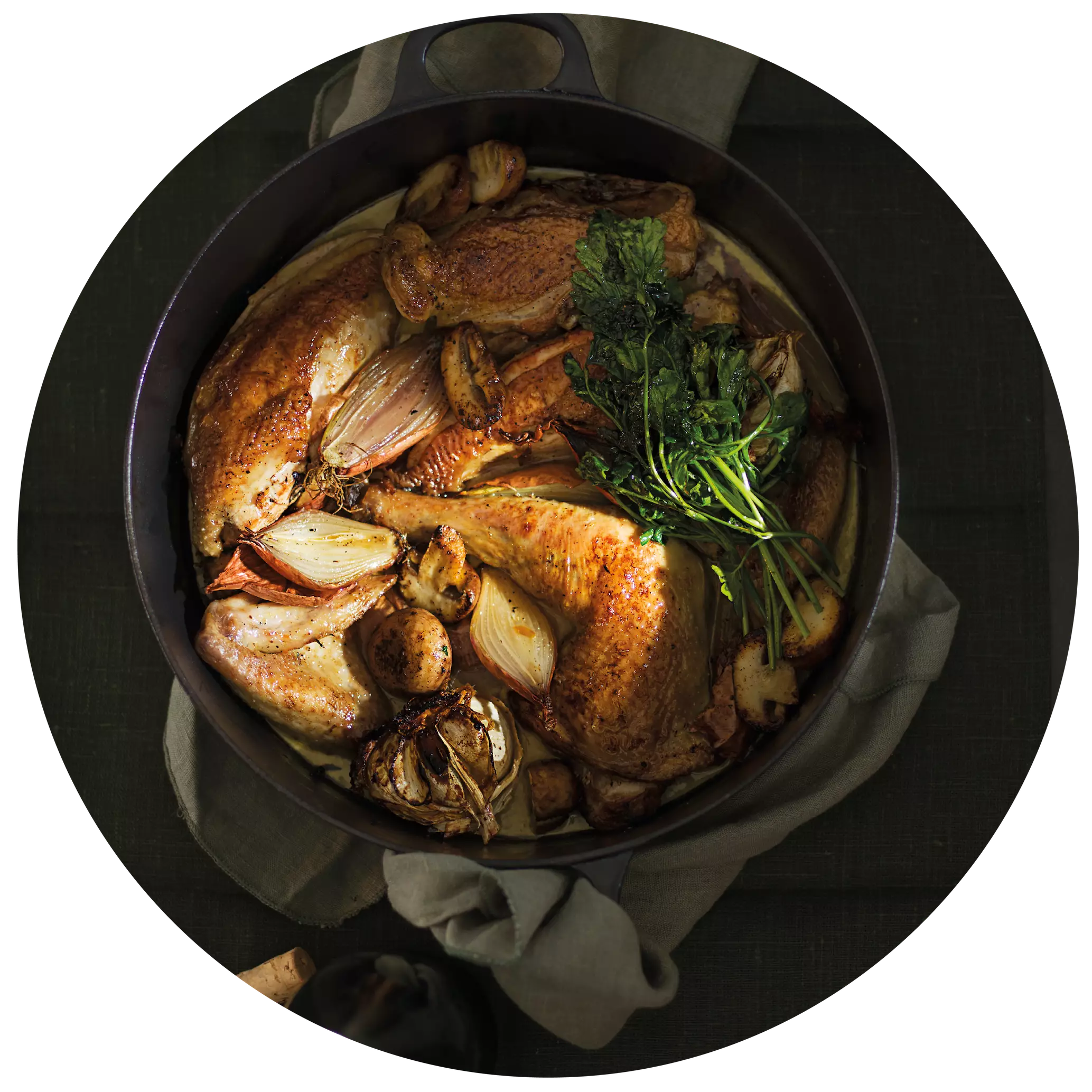
with bulgur Cabbage stew
with bulgur
- 200 Gramm Zwiebeln
- 1 ganze Knoblauchzehe
- 800 Gramm Spitzkohl
- 200 Gramm Möhren
- 400 Gramm festk. Kartoffeln
- 1 EL Kümmelsaat
- 1,5 Liter Gemüsefond
- 5 EL Olivenöl
- 2 EL Tomatenmark
- 2 EL edelsüßes Paprikapulver
- 3 TL Honig
- nach Belieben Salz & Pfeffer
- 120 Gramm grobe Bulgur
- 1 Bund Petersilie
- 4 Stiele Minze
- 1 ganze Zitrone
- 2 ganze Äpfel
- 3 EL Obstessig
Finely dice the onions and garlic. Clean, wash and quarter the cabbage, remove the stalk and roughly chop the cabbage quarters. Peel the carrots, halve lengthways and cut into approx. 2 cm wide pieces. Peel the potatoes and cut into approx. 2.5 cm pieces. Fry the carrots in a pan without fat and set aside.
Heat the vegetable stock in a small pan. Heat 3 tablespoons of oil in a large pan, sauté the cabbage in it for 10-15 minutes over a high heat until dark brown and remove from the pan.
Add the remaining oil to the pan. Fry the onions and garlic until translucent. Add the potatoes and muesli and sauté for 3-4 minutes, stirring constantly. Add the tomato purée and paprika powder and fry while stirring. Add the cabbage, honey and caraway and pour in the hot vegetable stock. Season with salt and pepper. Bring to the boil, cover and simmer for 45 minutes. Add the bulgur 20 minutes before the end of the cooking time.
Quarter the apples, remove the seeds, cut into approx. 1 cm cubes and add 10 minutes before the end of the cooking time. Pluck the herbs and chop medium-fine. Wash and dry the lemon, finely grate the zest and mix with the herbs. Flavour the stew with vinegar, salt and pepper and serve sprinkled with the herbs.
Tip: The pointed cabbage must be roasted really strongly and dark so that the aromas come out well.
- Spätburgunder / Pinot Noir (trocken)
- Trollinger (trocken)
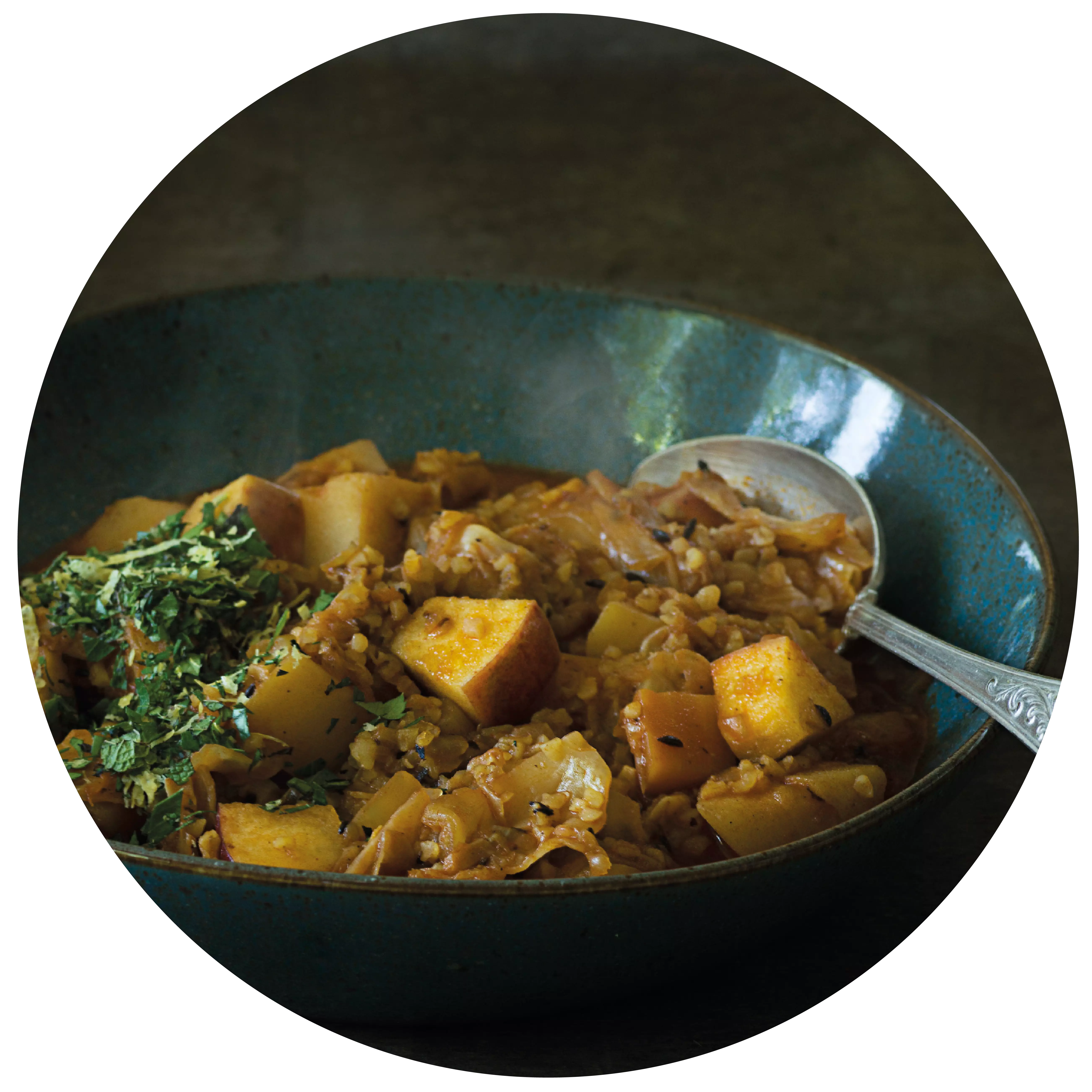
with cinnamon and sugar Odenwald apple soufflé
with cinnamon and sugar
- 1 kg Äpfel
- 250 Gramm Semmelbrösel
- 125 Gramm Zucker
- 2 EL Butter
- 1/2 TL Zimt
- 1 Msp. gemahlene Nelken
- 50 Gramm Rosinen
- 100 ml trockener Weißwein
- 1 EL Rum
- zum Bestreuen Zimt & Zucker
Sauté the breadcrumbs, butter, spices and 2 tbsp sugar in a pan. Peel the apples and cut into slices. Sauté in white wine with rum and sugar until the liquid has almost evaporated.
<p
<p>Fill the greased springform tin alternately with the breadcrumb mixture and apples (bottom and top layer of breadcrumb mixture).
Bake for one ½ hour at 140 °C. Sprinkle with cinnamon and sugar.
- Riesling (lieblich)
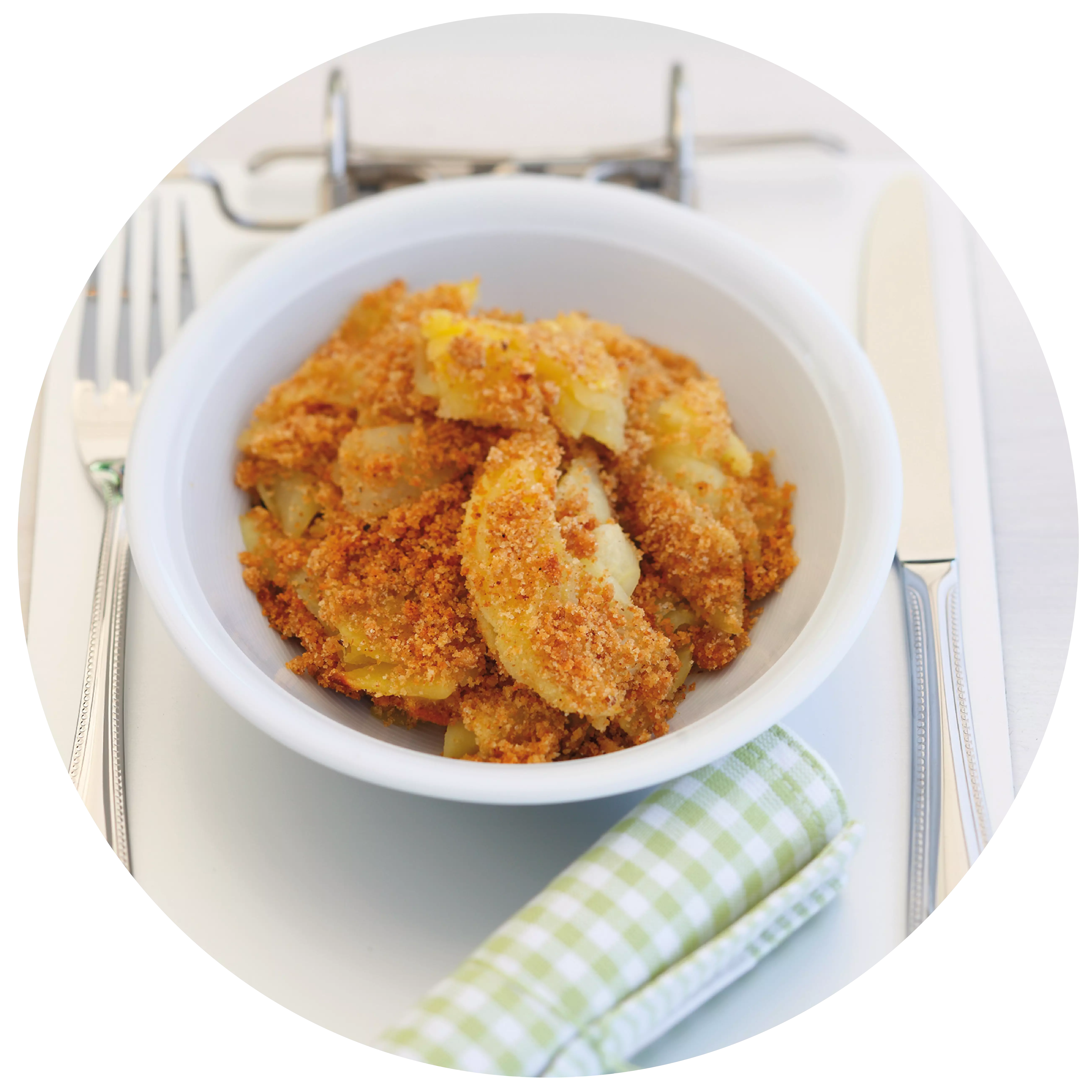
to sweet selections Apple doughnuts with vanilla sauce
to sweet selections
- 5 große, säuerliche Äpfel
- 200 Gramm Mehl
- 2 Eier
- 250 ml Milch
- 2 EL Rum
- Nach Bedarf Schmalz oder Öl
- Nach Belieben Zimt, Zucker, Salz
Peel the apples and remove the core, cut into finger-thick, even slices. Drizzle with rum and sugar. Leave to infuse.
Stir the batter, it should be quite thick. Turn the apple rings in it and bake floating in hot fat until golden brown.
<p
<p>Drain on kitchen paper and serve hot with cinnamon and sugar.
- Riesling (süß & edelsüß)
- Scheurebe (süß & edelsüß)
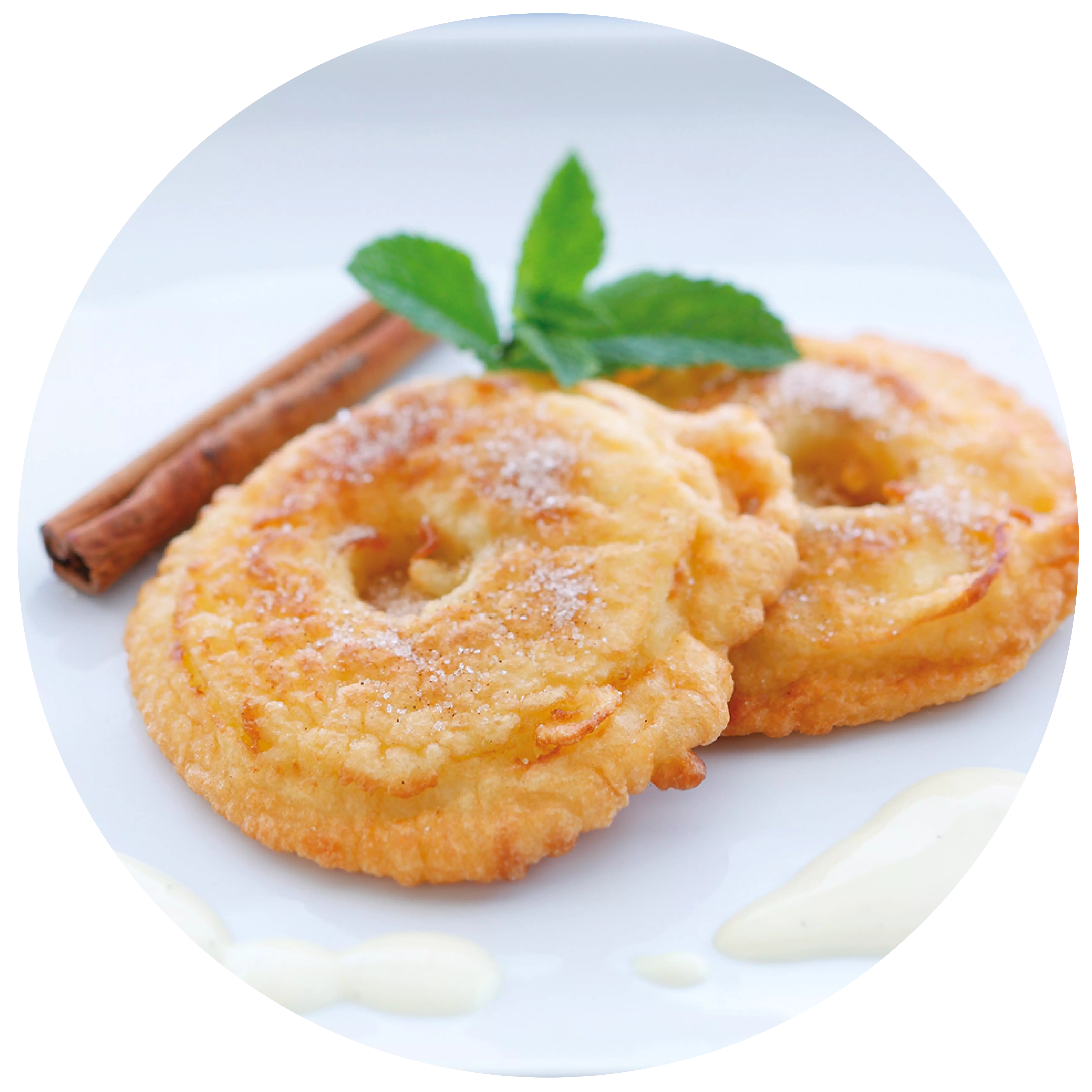
Events
-
Show
winetasting in our winery - cheese & wine
Mainz-Hechtsheim


